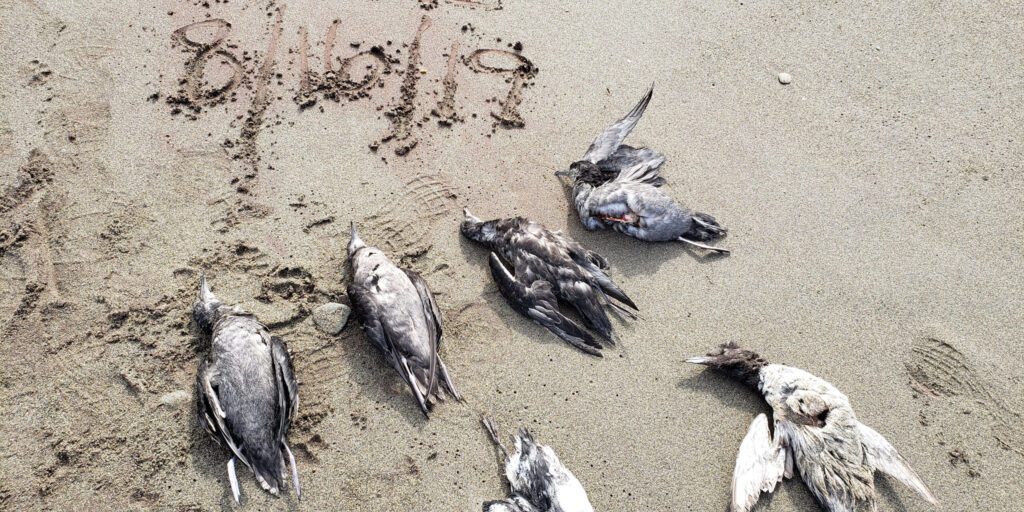Since 2017, the Bering Strait region has experienced abnormal seabird die-offs. Recent findings from researchers with the U.S. Geological Survey (USGS) show that there may not be a correlation between harmful algal blooms and these ongoing bird die-offs.
“To quickly summarize what we found in this region, with the exception of the fulmars in 2017, there have been few detections of algal toxins in any of these birds.”
– Matthew Smith, USGS Alaska Science Center
Matthew Smith and Caroline Van Hemert are both researchers at the Alaska Science Center. They shared their results of research done on dead seabirds from the region during a Strait Science presentation in late October presented by Alaska Sea Grant and UAF Northwest Campus.
The only population of birds from recent years that had significant amounts of HAB toxins, specifically saxitoxin, was the group of fulmars in 2017.
In 2019, 60 individual birds were submitted to the National Wildlife Health Center (NWHC). Smith said 88% of the samples contained no HAB toxins, and the few that did contain toxins, did not compare to the fulmars.
“And as far as toxin concentrations go, all these toxins were detected in digestive tissues, either upper or lower GI samples or liver, and they were all lower, very low, or trace amounts. They were significantly lower than what we found in fulmars in the 2017 die-off.”
– Matthew Smith, USGS Alaska Science Center
2020 seabird die-offs have not been fully analyzed yet due to setbacks caused by COVID-19, but the five carcasses USGS has studied from this summer and fall contained no HAB toxins. USGS received about 20 carcasses so far this year.
Many more birds from the Bering Strait were found than were researched and presented in this data, but Van Hemert says a lot of the carcasses were too far gone to be analyzed. Starving birds are also difficult to study because they have very little tissue from intestinal tracts, which is where HAB toxins are commonly found in birds.
“By no means are harmful algal blooms the only change that might be affecting seabirds. There’s other folks with Fish and Wildlife within USGS doing a fair amount of other food web-related work too.”
– Caroline Van Hemurt, USGS Alaska Science Center
While these results mean researchers are back to the drawing board for the cause of the die-offs, there are many other environmental changes that are happening in conjunction with HABs, such as warmer sea surface temperatures or less food availability.
USGS will continue to research the impact of HAB toxins on seabirds, as well as continue to look for potential causes for seabird deaths. Infectious diseases have already been ruled out as a possible cause in previous die-offs from the region.
If you find a dead seabird in the Bering Strait region, send your photos to Brandon Ahmasuk at Kawerak by calling 443-4265 or Gay Sheffield at Alaska Sea Grant by calling 434-1149. To report dead seabirds with USFWS, call their hotline: 1-866-527-3358.
Image at top: A few species of dead seabirds near Nome, Alaska, August 2019. Photo courtesy of Sara Germain, Alaska Department of Fish & Game.




